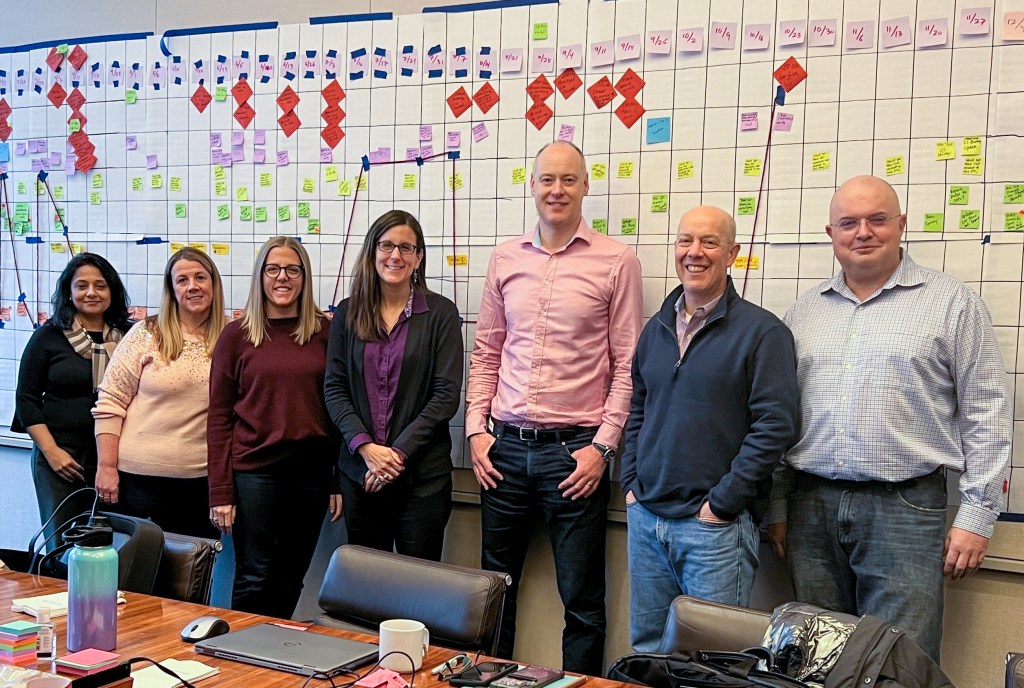The Danaher Business System (DBS) not only makes Danaher unique, but it also gives associates the ability to quickly adapt and tackle tough problems, no matter what role they are in. Reflecting on three decades with Danaher, Igor Zeltzer, VP, DBSO Innovation, shares how DBS—and Danaher’s continuous improvement culture—has propelled his career to where it is today.

Igor Zeltzer spent his teenage years coding. He developed an early love for computers and used every opportunity to learn more about programming. Considering his passion, a career in IT seemed like a natural choice.
Living in Ontario, Canada, he started his career in the IT Helpdesk at SCIEX (a Danaher business). Within a few years, he moved up through the ranks to lead the 10-person IT applications group, and later, SCIEX’s entire 70-person Software Engineering team.
When SCIEX acquired Molecular Devices (another Danaher business), Igor was given the chance to lead both the software and hardware development teams as Molecular Devices’ VP of R&D. He moved his family to California to start that new adventure.
“A transition that I thought would only last a couple of years stretched into eight as Danaher acquired SCIEX and Molecular Devices in 2009,” he said. “We decided to stay in the U.S. permanently.”
Under Danaher’s new ownership, Igor noticed some big changes immediately.
“The post-acquisition changes were visible and powerful,” he said. “Danaher’s relentless focus on data-backed gap identification was immediately striking, signaling early on that transparency, problem-solving, and results aren’t just values—they’re operating principles. I loved it. The learning opportunities were just incredible.”
Igor’s introduction to DBS
Igor was first exposed to DBS during a kaizen—a highly collaborative, rapid improvement event focused on solving a specific business challenge. The focus of this particular kaizen was identifying and eliminating the causes of unexpected variation within a specific manufacturing process, which can impact product quality, efficiency and costs.
“Using the DBS toolkit, we transformed the work cell in one week, resulting in a breakthrough reliability improvement,” he said. “The experience was life-changing. Being part of a team that made the transformation happen in a matter of days (including a visit to one of the suppliers mid-week) was an eye-opening moment for me. It was the immediate realization that I was just shown a ‘secret power’ and now that I knew that it existed, I couldn’t imagine going back to doing things the old way.”
Discovering the power of DBS
Igor’s appreciation for DBS grew quickly during his tenure at SCIEX and Molecular Devices.
“We applied a DBS tool called “Speed Design Review” to one project that shrunk the timeline from 24 months to 9 months, while delivering breakthrough quality compared to previous launches,” he said. “Later, in a different role, I saw a similar outcome when a 36-month timeline was reduced to 13 months with equally high-quality results.”

Building a new DBS tool
In 2016, Igor’s career took him to Florida to lead R&D teams for Beckman Coulter (another Danaher business).
“One of the challenges I discovered was with development partnerships—situations where two or more companies come together to deliver a product or service to a customer,” he explained. “I became interested in codifying best practices for partnerships and when the opportunity came to build a DBS tool for Open Innovation, I jumped on the chance to move to the Strategy Development Team to build the tool.”
What is Open Innovation?
Open Innovation is continuous two-way collaboration with external parties to bring insights and economic impact to Danaher growth. Danaher’s Open Innovation DBS tool helps shorten the design-to-delivery cycle and increase strategic differentiation through improved ideation, communication and acculturation.
During the tool development process, Igor collaborated closely with internal Danaher experts and conducted 70 pilot events with various Danaher businesses to test and refine the integration between Danaher’s DBS toolkit and industry-standard partnership practices. By leveraging learnings from the pilots, Igor was able to help optimize the tool to address the highest priorities for both companies and to reduce waste – whether it was wasted time, materials or productivity.
Taking his skills to the next level
In 2020, Igor had the opportunity to take a leadership role in Danaher’s DBS Office (DBSO) leading the Innovation team—the “dream job” he’d been seeking for the last 25 years. Members of the DBSO are not only the “custodians” of DBS tools, they collaborate across Danaher’s businesses to coach leaders and associates on how to leverage the tools as a way to drive continuous improvement across the organization.
“As I spent more time with the teams, deploying and codifying new practices, I gained incredible personal satisfaction helping them deploy DBS best practices,” he said. “By delivering products to better meet our customers’ needs—faster, and at a higher quality than thought possible—our teams and our customers win. I wanted to expand my ability to help teams go through this transformation, and moving to the DBSO was the best possible way to do that.”
Today, Igor leads a team of Danaher Innovation Directors. This team applies DBS and the principles of Lean and continuous improvement to the innovation value stream to accelerate growth of Danaher’s Life Sciences and Diagnostics portfolio. The team’s work includes collaborating with newly acquired businesses to install innovation best practices, coach innovation teams, define best practices, enhance the DBS toolkit, and collaborate with cross-functional teams to leverage DBS fundamentals for efficiency and transformation.
What is an Innovation Director?
Danaher’s Innovation Directors are experienced practitioners with more than a decade of experience leveraging DBS to lead innovation in R&D or product management. The team leverages the coach’s experience, mentorship, coaching and facilitation skills to help them deploy innovation best practices and the cultural change to make them work.
“Having spent 25 years in Danaher OpCos, transitioning to DHR corporate was a big change, but an exciting one,” he added. “Suddenly I went from only being able to help one business at a time, to being able to help all of Danaher’s businesses.”
Reflecting on a career built on DBS
“While Lean manufacturing best practices are more widely adopted, Danaher is unique, with DBS part of its leadership DNA. Anyone tasked with leading transformation activity can quickly move teams from awareness and desire for change to the knowledge and ability required to execute the change.”
“Danaher’s size and scale offer opportunities for career growth that few other organizations can match. I love the culture, built on the relentless pursuit of continuous improvement and the leadership discipline to recognize a problem, drive to the root cause, countermeasure and sustain.”



How does DBS benefit all associates?
Based on his own experience, Igor is a true believer that DBS can help every associate, regardless of their roles or specific work challenges.
“For most all problems an associate wants to solve, chances are the problem has been solved many times before. Often times, the analysis and solutions have been captured and codified through DBS. It’s like having the best multi-tool toolbox at your disposal. By leveraging DBS, associates can focus their creative energy on new areas that help solve important problems and, ultimately, improve human health.”
Take the next step
Start your journey of continuous improvement with Danaher.

Leave a Reply